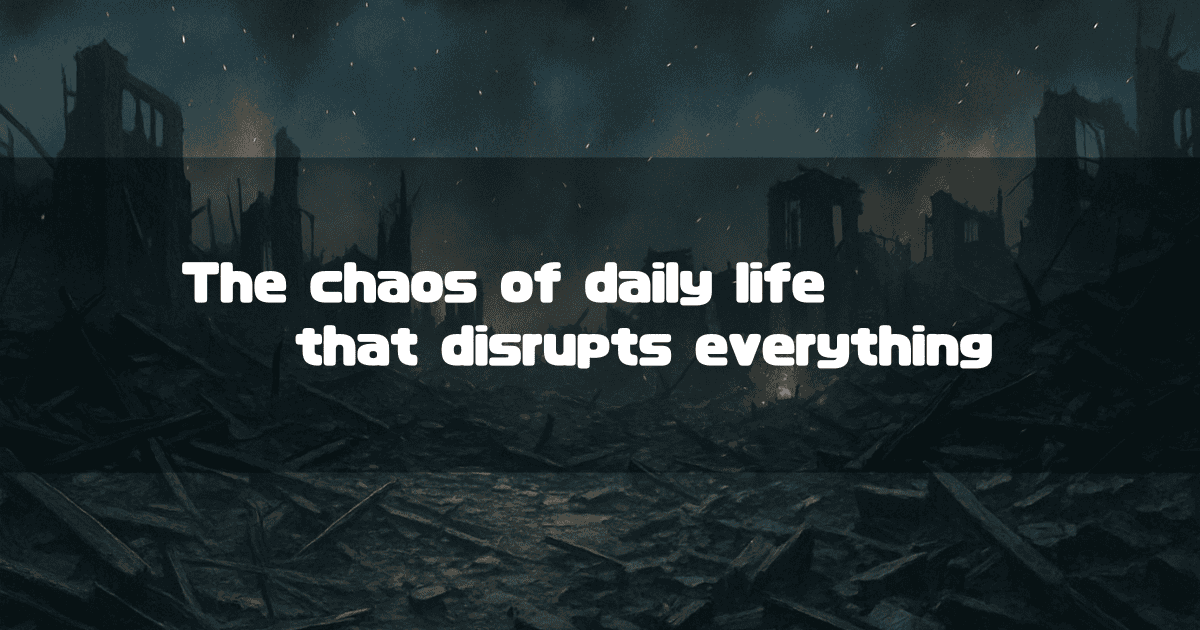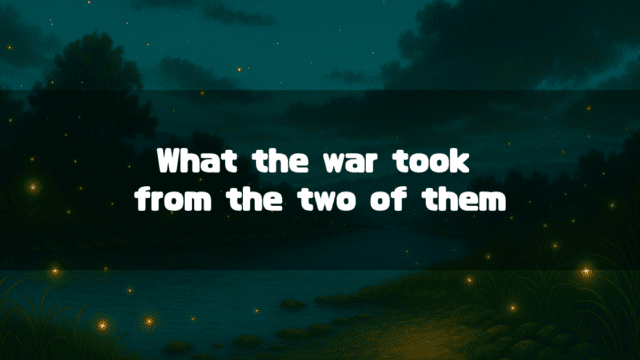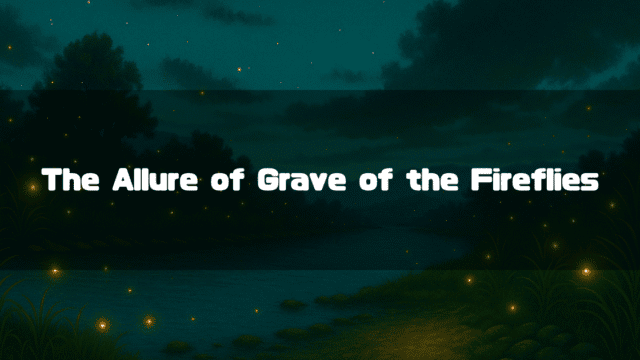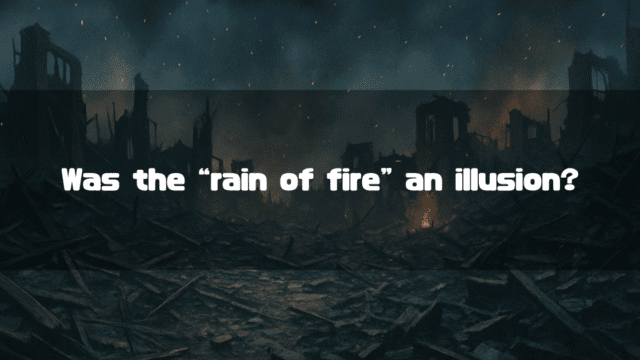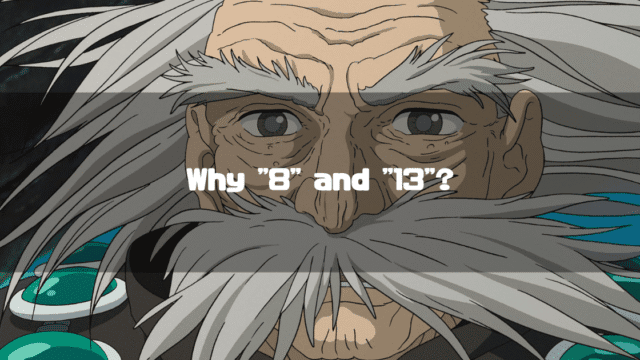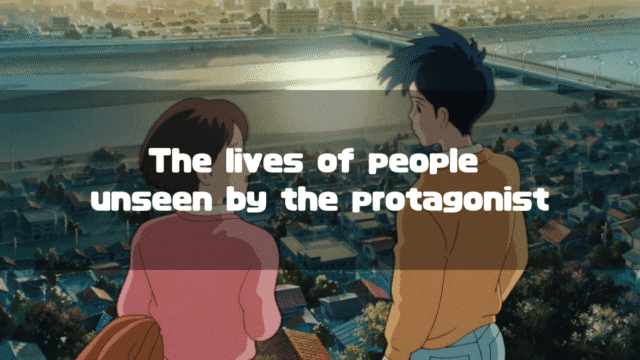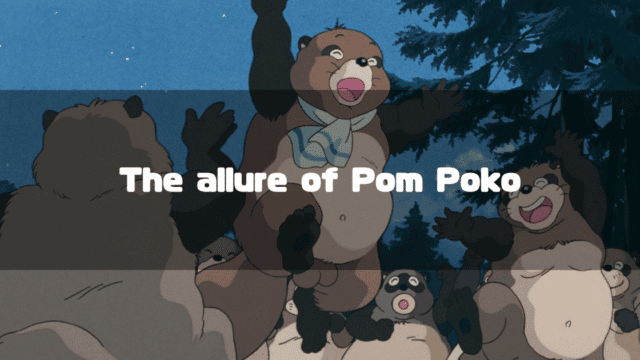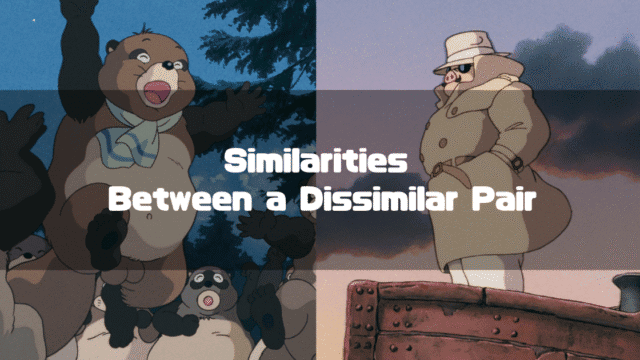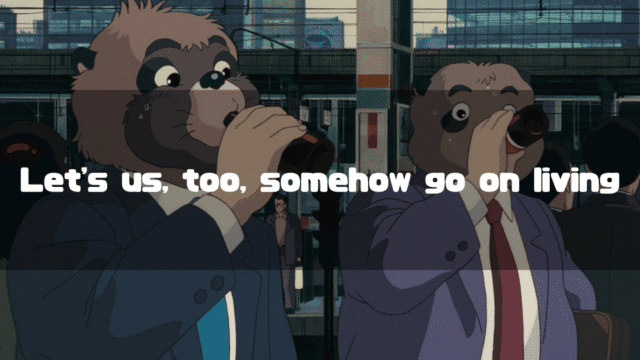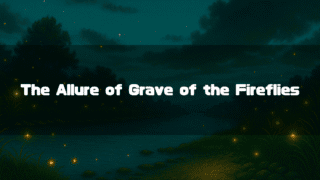“Grave of the Fireflies(Studio Ghibli Official)” is a theatrical animation film directed by Isao Takahata, released in 1988.
I have written about many films, not just those by Studio Ghibli, but when it came to “Grave of the Fireflies,” I could never quite put my thoughts into words.
As a simple impression of the film, “war is tragic” is enough, and it’s not a movie one watches over and over again. On the other hand, I felt it was a shame to leave it at just “war is tragic,” and I’ve finally organized what I want to write, so I’d like to elaborate on that this time.
The question that serves as the hook for this article, as stated in the title, is “Why did Seita and Setsuko have to die?“
How deeply can we contemplate the deaths of Seita and Setsuko? First, let’s introduce the words of director Isao Takahata regarding “Grave of the Fireflies.”
*This article is an English translation of the original Japanese article, “【火垂るの墓】その考察-清太と節子はなぜ死なねばならなかったのか?“.
Let an AI walk you through the highlights of this post in a simple, conversational style.
- Director Isao Takahata’s Words and Stance on the Film
Director Takahata positioned “Grave of the Fireflies” as a story of “resistance against totalitarianism” and “the tragedy of ordinary children,” while also stating it is “not an anti-war anime” and “not just a tearjerker.” It is thought that behind these statements was the fact that he could not present a “method to eliminate war.” - Criticism of Seita and “Guilt”
While it is natural to blame Seita for taking Setsuko with him to her death, it is possible that we are projecting our own guilt onto the fact that “the surrounding adults also didn’t offer a helping hand.” This connects to questions about modern society, such as “Are we ignoring people in need?” - A Closed World = Structure as a “Shinju-mono” (Lovers’ Suicide Story)
The director himself viewed the work as a “shinju-mono” in that it “depicts how they went towards death in a closed world.” While it seems Seita unilaterally involved Setsuko, there is also the aspect that Setsuko’s existence accelerated Seita’s death, taking on the appearance of a “muri shinju” (forced double suicide) where they mutually head towards ruin. - Daily Life During Wartime and its Value as “Ethnographic Material”
By carefully depicting the fact that banks were functioning and that there was ordinary life and children’s play even amid the chaos at the end of the war, the film, while fiction, serves as a realistic testimony to “life at that time.” Based on director Takahata’s own air raid experience, the work contains “documentary-like” meaning. - Isolation Leads to “Death”—The Importance of Human Connection
As shown by the structure where Seita becomes “information-disadvantaged,” unaware of the war’s end, and heads towards ruin with Setsuko after being cut off from society, the film carries the universal message that “people must live while connected to others.” The director’s fear that “society might one day reverse again” can be seen as a warning against the return of a world where people do not help each other.
- An Analysis of “Grave of the Fireflies”
- The Words of Isao Takahata
- What Lies Behind the Blame for Seita’s “Selfishness”
- What Director Takahata Found “Frightening” and the Harsh “Simulation”
- Why Did He State It’s Not an “Anti-War Film”? – “Testimony” as “Ethnographic Material” –
- The Term “Shinju-mono” (Lovers’ Suicide Story)
- Reconsidering the Aunt
- People Must Live by Connecting with Others
An Analysis of “Grave of the Fireflies”

The Words of Isao Takahata
The words of a creator, not just in film, carry great weight, and I find them very intriguing. The following words from Isao Takahata, the director of “Grave of the Fireflies,” are often quoted as crucial testimony:
At the time, it was an era where a very oppressive, rock-bottom “totalitarianism” was affirmed in social life. Seita resists this totalitarian era and tries to build a “pure family” with just Setsuko and himself, but is that possible? It isn’t, and that’s why Seita lets Setsuko die. But can we criticize him for that? The reason we modern people can easily sympathize with Seita is that the times have reversed. If the times were to reverse again someday, an era where opinions denouncing Seita more than the widow (the aunt) did might become the majority, and that thought terrifies me.
(Original Text, in Japanese)
当時は非常に抑圧的な、社会生活の中でも最低最悪の『全体主義』が是とされた時代。清太はそんな全体主義の時代に抗い、節子と2人きりの『純粋な家族』を築こうとするが、そんなことが可能か、可能でないから清太は節子を死なせてしまう。しかし私たちにそれを批判できるでしょうか。我々現代人が心情的に清太に共感しやすいのは時代が逆転したせいなんです。いつかまた時代が再逆転したら、あの未亡人(親戚の叔母さん)以上に清太を糾弾する意見が大勢を占める時代が来るかもしれず、ぼくはおそろしい気がします
Besides this, Director Takahata has left other comments about “Grave of the Fireflies,” and today, one can find words other than the above just by looking at the Wikipedia page for “Grave of the Fireflies(in Japanese).”
For example:
“It is not an anti-war anime at all, and it contains no such message.”
(Original Text, in Japanese)
「反戦アニメなどでは全くない、そのようなメッセージは一切含まれていない」
“This work is by no means just an anti-war film, nor is it a tear-jerking story about pitiful victims of war; it depicts the tragic story of a very ordinary child who lived in an age of war.”
(Original Text, in Japanese)
「本作は決して単なる反戦映画ではなく、お涙頂戴のかわいそうな戦争の犠牲者の物語でもなく、戦争の時代に生きた、ごく普通の子供がたどった悲劇の物語を描いた」
The sources for these quotes are also cited, so I think it’s safe to recognize them as accurate comments.
However, what is serious for us is that these comments seem contradictory at first glance, and they also seem to be at odds with our own impressions of “Grave of the Fireflies.”
But, in my opinion, there is no contradiction in these comments. I’d like to think about that.
What Lies Behind the Blame for Seita’s “Selfishness”
If a person with decent intelligence watches “Grave of the Fireflies,” they would probably want to blame Seita. And the essence of that reason, I believe, is that he took Setsuko with him to her death.
That is correct in its own right, and I feel the same way.
However, putting Seita aside, weren’t there many people in that story who could have saved Setsuko alone?
Even the aunt they first stayed with, though she may not have thought well of Seita, it wouldn’t have felt out of place if she had said, “Leave Setsuko here!”
And even after Seita and Setsuko started living in the cave, no one offered them a helping hand.
Of course, there’s the justification that “it was the end of the war, and everyone was preoccupied with their own survival,” and I think that’s true.
But it seems there is a subtle gap between defending the actions of the people in the story and condemning Seita.
In other words, isn’t there a part of us that thinks, even in our modern world not at war, that we might also leave people like Seita to die?
One could come up with any number of reasons. It’s not as if we aren’t preoccupied with our own lives. We have our daily lives and jobs, and we’ve likely had regrets, suppressing our own sense of justice and thinking, “I should have said something then” (if not, that’s great!).
And we feel a slight “guilt” about our own state of being. “It’s true I was busy with my own affairs, but I wasn’t so busy that I couldn’t have offered a hand.”
Could it be that we become aggressive towards Seita to hide that “guilt”?
What Director Takahata Found “Frightening” and the Harsh “Simulation”
A Fundamental Human “Kindness”
In the end, I think we have become the society that Director Takahata found “frightening,” but it’s not simply about how we evaluate “Grave of the Fireflies,” but rather a society that has stopped lending a hand to those in need, even while feeling “guilty” about it.
To put it another way, it could be said to be a society where the fundamental “kindness” of “helping those in need” has disappeared, or where we have become unable to express it.
Director Takahata experienced an air raid in Okayama when he was nine years old. At that time, he and his older sister fled through the city streets alone, spending the night by a nearby river, drenched in rain, until dawn (Reference: “Introducing a Dialogue with Director Isao Takahata [from the monthly magazine ‘Doho,’ August 2015 issue], in Japanese”).
I don’t know if there were adults who ignored him while making eye contact, but he must have felt an intense loneliness.
And to think that even in a society where most people have enough food and clothing and don’t have to flee from incendiary bombs, people have stopped offering a hand to an isolated nine-year-old boy and his sister by a river—that must be frightening.
However, thinking this way raises a question. To put it bluntly, it seems that the “frightening” nature would be clearer if Seita and Setsuko had met their tragic end sooner. Why were Seita and Setsuko able to live in the cave for a certain period?
I believe it was a harsh simulation by Director Takahata. On that day, at that time, if the rest of the family had all died and only the children were left, how far could they have gone? I think he wanted to try that for real.
Of course, “Grave of the Fireflies” is based on Akiyuki Nosaka’s original work, but I believe the reason he decided to adapt it into a film lies in this “simulation.”
Moreover, I think this was not a vague “I wonder how far they could have gone,” but a fierce “Alright, I’ll do it. If you won’t lend a hand, then I’ll do it!” (or so I perceive it).
However, Director Takahata is not a dreamer. He doesn’t want to mislead people with a low-level fantasy. If you think about things with your feet on the ground, it was clear that the end would be catastrophic.
In other words, wasn’t Director Takahata trying to say, “See? No matter how hard you try, what’s impossible is impossible, right? Of course, in the case of Seita and Setsuko, it was Seita’s fault for not being patient. But what about today? Is it the fault of the person in need?“
The “Rice Ball” as Hope
Well, I can somewhat understand what Director Takahata was trying to say, but the film “Grave of the Fireflies” is just too bleak.
However, even in this hopeless film, there is a single ray of hope depicted.
At the start of the story, Seita was in a train station, looking like a worn-out rag. The people passing by looked at him and treated him as if he were filth.
Amidst all this, there is a scene where a single person gives Seita a rice ball, and when I see that scene, I am overcome with tears.
It is the only salvation in an utterly hopeless and tragic story.
Isn’t Director Takahata saying, “Let’s live in a way that we can give a ‘rice ball’ to someone in need”? It sounds so simple in words, but because it is expressed within a carefully crafted film, it pierces our hearts.
Why Did He State It’s Not an “Anti-War Film”? – “Testimony” as “Ethnographic Material” –
Having considered various aspects so far, let’s now think about the words of Director Takahata that confuse us the most. That is, let’s consider the intent behind Director Takahata’s statement that “It is not an anti-war anime at all, and it contains no such message.”
I think there are mainly two perspectives on this. One is that it doesn’t provide a “How-to,” and the other is that it is an “autobiography.”
It Doesn’t Offer a Methodology for Eliminating War
When we try to infer Director Takahata’s thoughts, I believe the most important perspective is that “we have never seen a story that is not ‘anti-war’.” At least, not since 1945.
Conversely, I’d like to ask: what “anti-‘anti-war story'” have you seen?
All the stories we have seen since we were born have been “anti-war.” We have never seen any other kind of story. In fact, taking that as a given, I think we have been enveloped in stories that ask, “So what do we do now?”
In other words, if Director Takahata were to make an “anti-war film,” I think he would go so far as to depict “How to finish the war in the world.”
I believe he said it was not an “anti-war film” because he couldn’t create that.
The standard for an “anti-war film” in Director Takahata’s judgment was not to depict the obvious fact that “war is not good,” but rather a work that presents a methodology for how to eliminate war. And it must not be a “fantasy.”
Therefore, I think we can consider that Director Takahata commented that it was “not an anti-war film.”
“Grave of the Fireflies” as Autobiography and Documentary – A Feat Achievable Through Animation –
While there is the perspective that “Grave of the Fireflies” does not provide a “How-to” for eliminating war, it can also be seen as an “autobiography” for Director Takahata.
I think this sentiment is expressed in his words, “…depicted the tragic story of a very ordinary child who lived in an age of war.“
I believe he wanted us to savor the “feelings” associated with his experiences of being in an actual air raid in Okayama and fleeing alone with his sister.
It’s fine if we shed tears or feel “anti-war” sentiments as a result, but it could also be said that this was not his primary objective.
Of course, “Grave of the Fireflies” is based on Akiyuki Nosaka’s novel, but Director Takahata must have felt it was worth adapting into a film because he felt the “realism” within the original work.
Also, because it is animation, there was the aspect that the details could be visually re-experienced by the audience.
How did people actually live at the end of the war? How harsh and yet how ordinary was it?
People who know that time can supplement their understanding by reading “Grave of the Fireflies” as a novel, but those who don’t, cannot. Because it was carefully and meticulously depicted as an animation, we are able to learn about the conditions at the end of the war.
And the person who could take charge of that was, after all, someone who knew that time.
In the end, because he was a person who could bring an autobiographical aspect to it, I think “Grave of the Fireflies” became a meaningful work of visual art.
And as a result, the film version of “Grave of the Fireflies” has become a documentary depicting the past.
Of course, “Grave of the Fireflies” is fiction. It is fiction based on the real experiences of Akiyuki Nosaka.
But it was our country’s good fortune that Isao Takahata visualized that fiction, and it has become an important piece of visual material. Because Isao Takahata was someone who carefully depicted people’s lives, he was able to correctly visualize “Grave of the Fireflies.”
Also, considering the meaning of adapting a novel into a film, there is great significance in expressing “Grave of the Fireflies” through animation. In other words, since we cannot go back in time and roll a camera, animation is more suitable for visualizing it as a kind of “documentary.”
I imagine there was a great deal of hardship in executing this.
There is an anecdote that when “Grave of the Fireflies” was released, there were two scenes where the color was not filled in. Isao Takahata was a person who had no intention of meeting the already decided release date, and was someone who was obsessed with the quality of the film. Therefore, production was severely delayed, leading to its release with some parts uncolored.
I think the people involved at the time went through a lot of trouble, but as a result, “Grave of the Fireflies” became a masterpiece, so we should praise Isao Takahata. Though I think it was really tough for the people around him.
However, as a result of that great hardship and sacrifice, “Grave of the Fireflies” has an aspect of being “ethnographic material.”
I think the methodologies for learning about the past (history) are “historiography (documentary research),” “archaeology (excavation),” and “ethnography (fieldwork).” “Grave of the Fireflies” would fall under the category of material for “ethnography.”
Unfortunately, the depiction in “Grave of the Fireflies” is also based on subjective experience. Therefore, it cannot be a subject of “historiography,” and of course, not a subject of “archaeology” (though in 1000 years, “animation” itself might become an archaeological artifact).
However, it does become “ethnographic material” as important testimony.
I think there are some inaccuracies, but the “ethnographic facts” we can learn through “Grave of the Fireflies” include:
- It seems banks were functioning.
- Life was difficult, but there was a kind of normal life.
- It was possible to see a doctor.
- Children were playing around cheerfully.
When you read textbooks, the period near the end of the war is depicted as “dark days,” but the visual expression in “Grave of the Fireflies” shows that this was not necessarily the case. Of course, these points must be subjected to much criticism, but they are a form of “testimony.”
I think that within the motivation to go out of his way to adapt Akiyuki Nosaka’s novel into a film, there was a desire to leave behind this kind of “ethnographic material” or “testimony.” In that sense as well, he probably said it was “not an anti-war film.” In other words, I think it also had the nuance of “this is a testimony.”
However, it’s not to say that everything depicted in “Grave of the Fireflies” can be accepted as source material. For example, the incendiary bombs depicted in the Kobe air raid scene can be seen as inaccurate. I have summarized this matter in the following article.

Although it is an important document, caution is necessary when viewing works that depict the “past.”
Why Was Seita at the Train Station?
As a topic slightly related to the statement “it’s not a war movie,” I also want to consider why Seita was at the train station at the start of the film.
As we saw in the movie, he was living with Setsuko in a dugout (bomb shelter), so it would seem natural for him to have ended his life there like Setsuko.
A hint as to why he was at the train station is likely in the opening line of the film: “September 21, 1945. That night, I died.”
As mentioned earlier, Setsuko’s date of death was one month prior, on August 22. This means Seita survived for one month after Setsuko’s death.
What was he doing during that time?
He had the secret weapon of his parents’ savings, but the film showed that he was in a state where money was of no use.
However, a 14-year-old boy who was already malnourished could not have survived for a month without eating or drinking.
In other words, he was eating just enough not to die.
However, money was useless, and he lacked the ability to live within a community. This likely means he was living hand-to-mouth, resorting to theft and other means.
Then, perhaps having run out of places to steal from or the energy to do so, it is conceivable that he turned to begging.
If you’re going to beg, it’s better to be where there are many people, so it’s plausible that he moved his “base of operations” to the train station.
What becomes apparent here is the fundamental human behavioral principle of trying to survive one way or another.
Even amidst the despair of Setsuko’s death, he got hungry, and when he got hungry, he tried to eat something (anyone would!).
And this human essence is symbolized in the month Seita survived, and it is condensed in the opening line, “September 21, 1945. That night, I died.”
“Grave of the Fireflies” certainly has the element of “war,” but by depicting the lives of Seita and Setsuko, wasn’t it also trying to depict “what it is to be human”?
This aspect, too, seems to be connected to why Director Takahata stated it was “not a war movie.” It seems there was a part he wanted the audience to see more than just the “war.”
Let me be clear, I’m not saying I wanted Seita to die after Setsuko. I’m no longer at an age to think that way. I sincerely hoped he would survive even one day longer.
The Term “Shinju-mono” (Lovers’ Suicide Story)
Now that we’ve come this far, I’d like to offer my personal thoughts on the following words from Director Takahata:
What drew me to Akiyuki Nosaka’s original work was the structure of a “shinju-mono,” which depicts how the two of them head toward their deaths in a closed world. I had a strong creative ambition that I could depict it with a new kind of appeal through animation.
(Original Text, in Japanese)
野坂昭如さんの原作にひかれたのは、2人がいかに死に向かっていったかを閉じた世界の中で描くという「心中もの」の構造があったこと。アニメなら新しい求心力で描けるのではないかという表現上の野心が強かった。
From “My Air Raid Experience, Properly in a Film: ‘Grave of the Fireflies’ Director Isao Takahata”, in Japanese
The issue I want to address is, of course, the meaning of the word “shinju,” but unfortunately, I haven’t yet been able to put my own words to his “creative ambition.” Instead, I will consider Director Takahata’s intention in trying to depict a “shinju-mono” from the perspective of “depicting how the two of them head toward their deaths in a closed world.”
The Unidirectionality and Ruin of “Shinju”
Originally, a “shinju-mono” is a story where a man and a woman, by mutual consent, say “at least in the next life…”
But does such a thing really happen in reality? Well, I suppose it did, but the important point is, how does one determine that it was a “shinju” from the fact that two people died?
What I want to say here is my own conjecture that “shinju” is often a “muri shinju” (forced double suicide).
When there are two people, some kind of power dynamic is born, and it’s easier to imagine that what is a “shinju” for one person is a “muri shinju” for the other.
And this might be a bit too malicious, but didn’t Director Takahata see that “unidirectionality” in Akiyuki Nosaka’s original work?
For Seita, Setsuko might have been a partner in “shinju.” Setsuko might have wanted to be with Seita too.
However, Seita survived, and Setsuko died. And in the end, Seita died too.
As Director Takahata says, the two lived in a “closed world.” As a result, they were annihilated by the designs of one party.
If we apply this to modern society, what does it become?
It would mean that if you don’t lend a helping hand, you yourself will die.
We are, in fact, always imposing and being imposed upon in a “muri shinju.” That position is not absolute and changes depending on the situation.
Everyone just kind of vaguely gets by together. I think this is the only way, but it is difficult.
What should we do? What should we do? Unfortunately, I don’t know.
The Objectivity Born from the Bidirectionality of “Shinju”
Now, behind everything I’ve considered so far, there is the clear thought that “Seita took Setsuko with him.”
That is undeniable, but if we look back at the term “shinju-mono” once more, you can also take the view that “it was Setsuko who drove Seita to his death.”
I know I’ll be criticized for saying such a thing, but I continue to write in the belief that there is meaning in “fiction” precisely because it allows for such thoughts.
And by being able to take this “indecent” view, we can come to see “Grave of the Fireflies” objectively.
In other words:
- Seita was a fool, but the aunt was also mean,
- It was Seita who killed Setsuko, but he did take good care of her,
- Their deaths were Seita’s self-destruction, but society did not lend them a hand,
- It’s something one doesn’t want to think about, but if Setsuko hadn’t been there, Seita might have been able to stay at the aunt’s house, and
- Setsuko died, but her life might have been more fulfilling than if she had stayed at the aunt’s house.
We tend to forget that Seita is a 14-year-old child. Even if we can structurally blame Seita, it’s cruel to hold a 14-year-old child responsible for a life (we tend to forget even this).
I feel that Director Takahata, being a very intelligent person, takes care not to create “absolute positions” in his works. That’s why our own sense of “justice” is shaken, and we end up worrying about various things.
“I want to blame Seita, but it was society that killed them, but it was during the war so it couldn’t be helped, and Seita should have been more patient, but still, wasn’t there something that could have been done…?” and so on.
A Takahata film is probably fine just like this. We watch Takahata films in order to agonize over them.
The Already Broken Hearts of Seita and Setsuko
Finally, in the context of “shinju,” I want to consider the “emotional wounds” of Seita and Setsuko.
At the ages of 4 and 14, Seita and Setsuko experienced the terror of death in the Kobe air raid and the death of their mother.
Seita, in particular, saw his mother covered in bandages from severe burns, and he also saw her corpse being treated like an “object,” cremated in a way that was far from a memorial.
Could a 14-year-old boy endure that? It wouldn’t be surprising if he couldn’t.
I consider Seita’s emotional wounds in more detail in the following article:
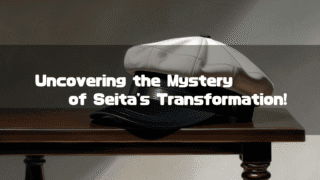
In any case, Seita and Setsuko were carrying deep emotional wounds.
Because Seita doesn’t show his wounds on the surface, we don’t notice, but it’s too convenient to think that a 14-year-old boy and his younger sister would be unchanged before and after experiencing an air raid and their mother’s death.
In other words, weren’t Seita and Setsuko already broken?
If you look at Seita at the beginning of the story, it’s unthinkable that he would just lie around all day while being a burden to his aunt. But that’s what happened.
The emotional wounds they suffered may have robbed them of the ability to interact with people in the community.
“Shinju” is, in other words, an act based on despair and sadness towards this world. If the state of the world rejects them, there is no need to cling to that world, so they try to be united in the next world.
Being cast out of the community at the end of the war may have meant death, but for someone who has lost the ability to interact with people in that community, that world itself is telling them to “die.”
And because Seita thought so, he escaped into a world of just the two of them, and that action should indeed be called a “shinju.”
When you watch “Grave of the Fireflies,” you can’t help but want to blame Seita, but considering what he experienced, it’s natural to think he had deep emotional wounds, and the cause of that was precisely the war.
If you want to blame something, the target should not be Seita, but the war that inflicted an unspeakable wound on his heart. Seita had no other path left but “shinju.”
Now, this concludes the discussion on “shinjū-mono” (love suicide stories) in this article, but I delve deeper into this aspect of the story from the perspective of “Why can’t Seita and Setsuko pass on?” in the following post:

I believe the fact that a single topic can generate endless points for consideration is a testament to the greatness of “Grave of the Fireflies” and its director, Isao Takahata.
Reconsidering the Aunt
Finally, I would like to think a little more about Seita and Setsuko’s aunt.
The Aunt’s Irritation and “Jealousy”
In fact, the one who substantially drove the narrative of “Grave of the Fireflies” was not Seita, but that aunt. If she had shown a fantastical heart of compassion, that story could not exist.
In that case, the aunt must necessarily be an unfavorable presence for Seita.
So, why was the aunt so harsh on them?
You could say “because Seita was a fool,” and even if not, the feeling of them being “simply a nuisance” is not incomprehensible. The feeling of “at least act a little more meekly!” amidst the chaos of war is rather understandable.
But… since we’re at it, let’s speculate a little more.
One potential basis for this is that Seita and Setsuko’s father was a Captain in the Imperial Navy.
At the time, it was the end of the war, and a “soldier” was an esteemed figure. If that person was a naval officer, they would be even more “esteemed.”
While many people were forced into a difficult life, Seita’s family may have been living a relatively comfortable life, unintentionally. Not just financially, but also in a psychological sense.
And it wouldn’t be unreasonable for the aunt to have felt a certain kind of “jealousy” towards such a Seita.
Even while understanding that the person before her was a child she should protect, the scent of a “Navy Captain’s child” emanated from Seita and Setsuko’s words and actions.
In other words, the fact that Seita and Setsuko’s father was a Navy Captain not only provides backing for the fact of the “7,000 yen savings” but also serves as a basis for the aunt’s harsh attitude towards the two of them.
The Aunt as a Victim of the Narrative
Now, the aunt, who could ultimately be called the most important character in the story, can also be seen as a victim of a certain kind when viewed from a meta-perspective.
In other words, that aunt is made to play the hated role of the “mean aunt” to make the story of “Grave of the Fireflies” work.
In recent years, criticism of Seita has grown, and the aunt’s actions have, on the contrary, drawn sympathy.
Director Takahata described such a situation as “frightening,” and I have stated my own thoughts on that above, but what about the aunt herself?
She might say, “Finally, the times have caught up!”
Of course, this is speaking from a meta-perspective, and I’m sure that aunt felt terrible regret after the war.
And we must not forget that the aunt was also a victim of the war.
People Must Live by Connecting with Others
The reason “Grave of the Fireflies” stays in our hearts is, of course, mainly due to Setsuko’s tragic death (personally, the image of Seita’s mother wrapped in bandages was more significant).
However, while her death itself is sad, the fact that Seita did not know the war had ended makes the tragedy even greater. By leaving his aunt’s house, he had become what we would today call “information-disadvantaged.”
According to Akiyuki Nosaka’s original novel, Setsuko’s date of death is August 22. If Seita had known the war was over, he might have been able to bow his head to his aunt. At the very least, it would have brought about a major change in his actions (or rather, it makes us want to believe so).
And Setsuko might have survived.
Of course, the signs of Setsuko’s malnutrition had appeared quite early, and even if Seita had changed his ways, Setsuko’s death might not have been avoidable.
Nevertheless, we can’t help but think that the news of the “end of the war” might have changed something.
It is an endlessly unbearable story, but the fact that Seita had become “information-disadvantaged” symbolizes the simple message to us that “people must live by connecting with others.”
This too sounds simple in words, and it seems like something everyone knows. But because we are confronted with it within the story of “Grave of the Fireflies,” it hits home.
Since the 1990s, it seems we have been trying to free ourselves from the troublesomeness of “community.” In a sense, this can be said to be a mature society where “isolation” no longer means “death,” but on the other hand, it seems we are also beginning to notice the risks of “isolation” that still remain.
Perhaps there will never be a day when we humans can rest in a stable, absolute state of being. “Connection” creates “isolation,” and “isolation” will seek “connection.” In the end, new things are only born from “resistance to the situation.”
And when our society regains some kind of “community” and once again has the insurance of “connection,” perhaps Seita will be re-evaluated as a being who resisted that situation.
Although we can never know the future.
The above are my personal thoughts on “Grave of the Fireflies.”
“Grave of the Fireflies” is a story you can never forget once you’ve seen it, but this article is a “personal essay” published under the guise of an “analysis.” How did you all perceive “Grave of the Fireflies”?
About the Author
Recent Posts
- 2025-09-16
Maleficent: Full Synopsis and Analysis – A Tale That Complements and Corrects the “Questionable Points” of Sleeping Beauty - 2025-09-15
An Analysis of Disney’s “Sleeping Beauty”: Plot Spoilers, Its Enduring Charm, Lovable Nitpicks, and Differences from the Original Tale - 2025-09-06
The Boy and the Heron: Characters, Voice Actors & Analysis - 2025-09-06
The Boy and the Heron: Full Synopsis & Analysis (Spoilers Explained) - 2025-09-06
The Boy and the Heron: The Amusing “Fraud” Legends of Toshio Suzuki, the Model for the Gray Heron – The History of the Masterful Skill that Supported Studio Ghibli –

